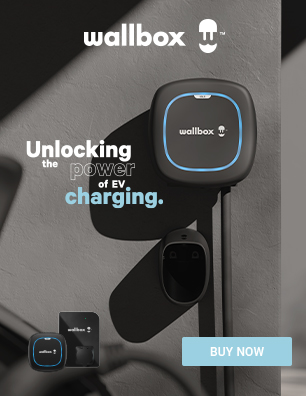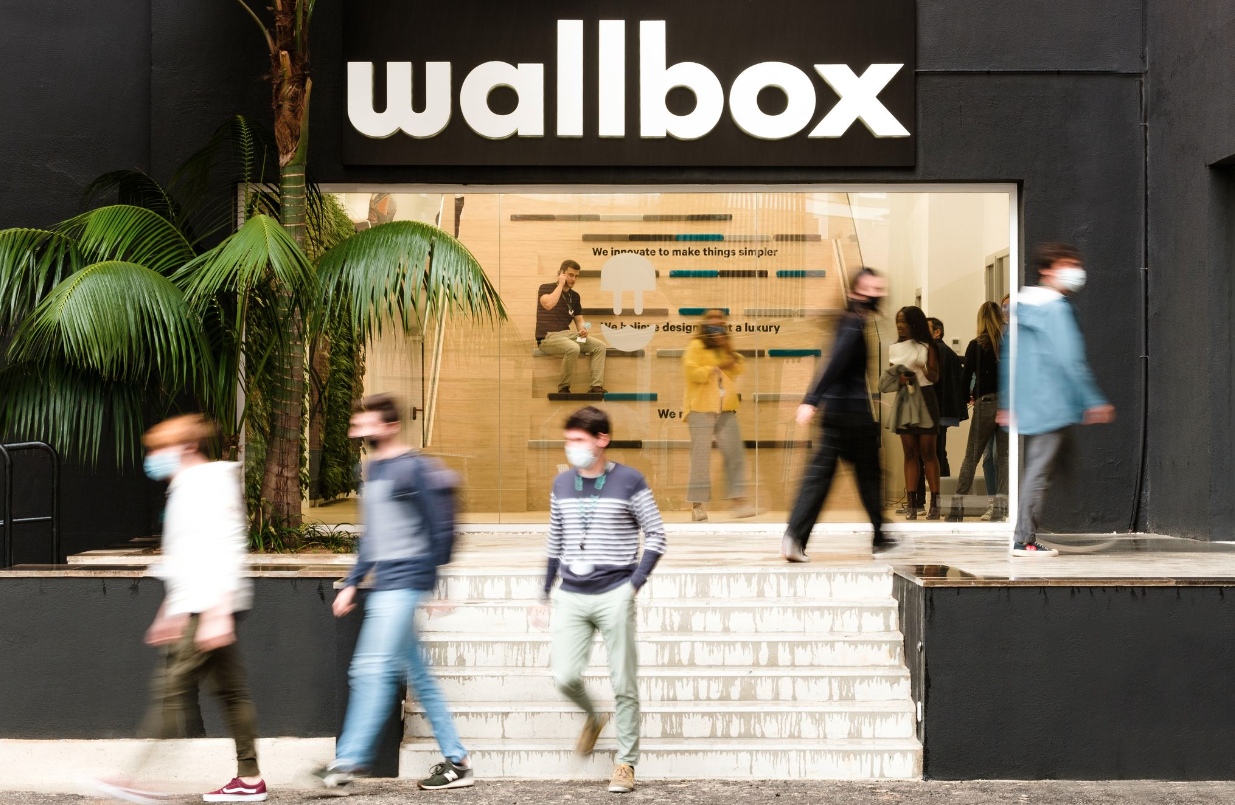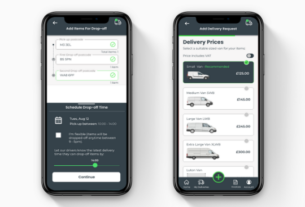Sponsored content. Learn more about Wallbox Chargers now!
Electric Vehicles are taking over the logistics industry but there is a lot more to know about them before companies take the first steps. We spoke to Alan McCleave, Country Director of UK & Ireland at Wallbox Chargers, who shared some tips on how to successfully implement a charging infrastructure for an EV Fleet. You can watch the full video interview with Alan below or read the article.
Alan, give us a bit of history behind Wallbox? What do you guys do and for how long have you been doing it?
Wallbox creates smart charging and energy management solutions that combine innovative technology with outstanding design, facilitating the adoption of electric vehicles today to make more sustainable use of energy tomorrow.

We design, manufacture and offer customers not only an EV charging solution, but also the energy management software that turns their EV charger into a smart device. Due to our vertically integrated supply model we have been able to adapt and mitigate increasing supply chain issues and continue delivering to customers without interruptions.
Wallbox has four factories globally, two in Barcelona Spain, one in China that manufactures for the Chinese market and another in Arlington, Texas that is expected to start production by early Fall 2022. The fourth factory will allow us to manufacture over 250,000 units in 2022, andover 500,000 in 2025.
Innovation and, therefore, investment in R&D&I is one of the company’s priorities. In 2021, Wallbox invested 12 million euros in this concept. We have a suite of charging and energy management solutions for home, business and public charging, both AC and DC. We are a global player, having been in the market for 7 years and present in more than 100 countries.
The Wallbox portfolio of chargers is pretty wide, you have both AC and DC fast chargers, what are your recommendations for Fleets?
AC charging is on average the most suitable solution for fleets as it covers the charging needs.

Then what should a company be looking for when it comes to AC chargers?
A great example to answer this question is a recent case study we had with a global fleet delivery company who planned to become the first fully electric fleet to provide last-mile delivery services for eCommerce in big cities.
We design, manufacture and offer customers not only an EV charging solution, but also the energy management software that turns their EV charger into a smart device. Due to our vertically integrated supply model we have been able to adapt and mitigate increasing supply chain issues and continue delivering to customers without interruptions.
In order to achieve their goal, they needed a charger that could stand up to such a high level of outdoor use. With multiple delivery drivers needing to charge their vehicles each day to continue the company’s 98% punctual delivery rating, finding an option that crossed quality with ease of use and efficiency was key for their electrical vehicle fleet management.
Here is where Wallbox stepped in. Not only do we lead the market with highly advanced chargers, but we’re one of the very few companies who offer a 360 solution, from software management to installation and after-sales support with maintenance and CPO (Charging Point Operator) services. Copper SB, our socket charger, was one of the chargers used for this project.

What was the final outcome of this project?
Thanks to this project, the company managed a CO2 reduction of 62,6 tonnes per year for their electric vehicle fleet consisting of 12 cars that travel 438.000 Kms per year.
In addition, this CO2 emissions saved supposes an energy cost saving equal to 5 average homes per year. Last but not least, the fixed amount costs savings of €23,000 per year, just in gas usage.
What about tracking? Things like charging consumption, knowing for sure the vehicles are charging or if each driver has an assigned vehicle giving them permission to charge it?
All our chargers are compatible with OCPP 1.6j, which enables their integration in any charging backend capable of providing everything you just said.
Tracking charging consumption so that you can compare “fueling costs” down to vehicle level. Create and assign user permission for the chargers. Chargers real time status and remote diagnosis. And by the way, we just recently made a massive update to the OCPP 1.6j definition of our chargers with tons of enhancements.
You’ve told us about the chargers and software, yet you’ve hinted something about installation before, what’s the deal with that?
Manufacturers don’t always talk about this but in most cases, at least ⅔ of the costs of an EV charging project are attributed to the installation. (cabling, engineering, man hours, legal tramitation, etc.)/ (last third chargers & accessories)
How can Wallbox support EV charging installations?
Wallbox can support any sort of installation. We have another good case study to explain that. In 2017, a water company started changing its urban technical fleet to electric vehicles as an alternative to fuel fleet vehicles.
The company had invested in 132 zero-emission cars, the largest EV fleet to circulate the metropolitan area.
The challenge was how we can provide a network of charging points for the new fleet? They needed a big implementation of EV Charging stations (156 units) in different locations.The 132 cars required enough energy to serve over 3 million customers across the 636 km2 that make up the metropolitan area.
Wallbox offered Aigües de Barcelona a full-service package, including the design of the charging infrastructure, installation, and set up of the chargers by qualified engineers, as well as service and maintenance from partner technicians, if desired.
Wallbox installed 156 business charging stations to 6 of their locations, all integrated with the application “myWallbox”.
And what was the outcome?
Our solution prevented the emission of more than 105 tonnes of CO2. We also offer efficient, reliable and safe charging points that can be easily used by every employee.
How can Wallbox make the transition easier for logistics companies?
Wallbox is currently working with a large global logistics business that covers the whale of the UK and is transitioning its traditional ICE delivery vehicles for BEV delivery vehicles. They operate numerous regional depots across the whole of the UK.
Wallbox has installed our tethered unit chargers at 12 of their depots that will be the first to receive their new EV delivery vehicles. We have also installed energy management solutions, to solve the challenging low power output of traditional depots that did not need big energy output.
And what was the outcome?
Our solution means the drivers can pull up at the end of a long shift, grab the tethered cable and plug the vehicle in to charge and continue with their work, making it really easy for the driver to charge their vehicle, no hunting for cables or messing around scanning a card to start the charging process, just plug in and the charging will begin when the depot wishes to schedule it to start.
The power management solutions mean that at busier times of the day for the depot, the chargers may be reduced in charge speed, only to speed up when the depot uses less energy e.g. overnight where most of their charging takes place. This means the depot does not exceed its energy capacity, but the vehicles all have enough charge in them when they start their journeys early the following morning, with very little power upgrades needed, which can be very expensive and can take months to implement.
You can watch the full video with Alan McCleave from Wallbox UK & Ireland below. ✷

